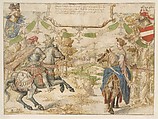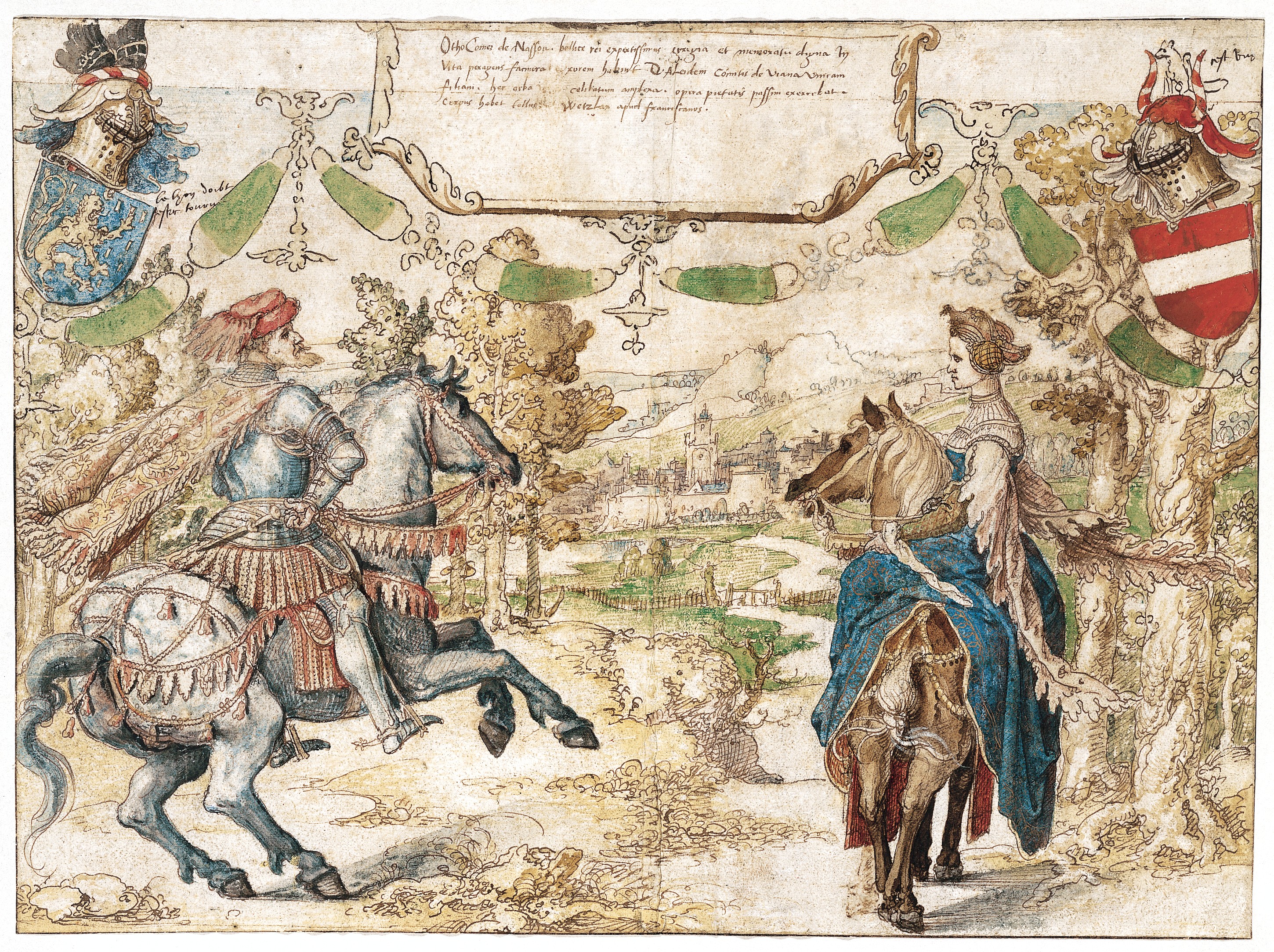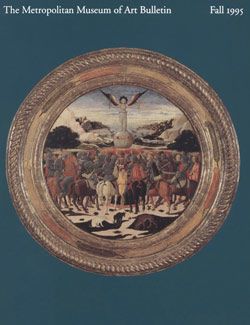Otto, Count of Nassau and his Wife Adelheid van Vianen
Bernard van Orley Netherlandish
Not on view
Van Orley was a leading artist in early sixteenth-century Brussels, the center of European tapestry production at the time. This drawing is a design for a tapestry in a series of eight commissioned about 1528–30 by Hendrick III, count of Nassau, to glorify his ancestors. These tapestries, probably destroyed by fire in 1760, were woven by the workshop of Willem Dermoyen, which in 1516–20 had already produced tapestries after Raphael's influential designs for the Acts of the Apostles. Raphael's example can be felt in Van Orley's monumental, dynamic figures set in the dramatically receding, richly colored landscape, but the details of costume and setting are entirely Netherlandish. As the count charges on his rearing steed, his wife pauses on her mount and turns toward her husband, causing her elaborate sleeves to flutter behind her.
Due to rights restrictions, this image cannot be enlarged, viewed at full screen, or downloaded.
This artwork is meant to be viewed from right to left. Scroll left to view more.









